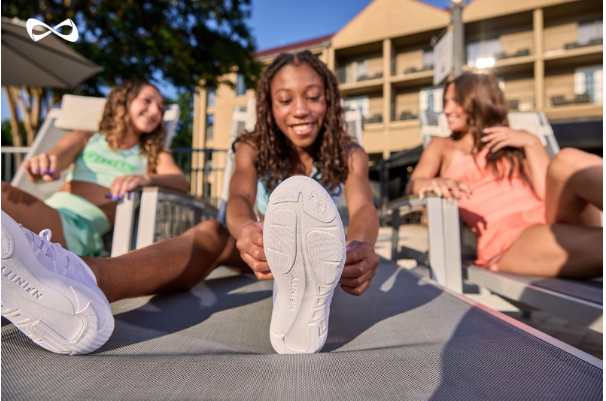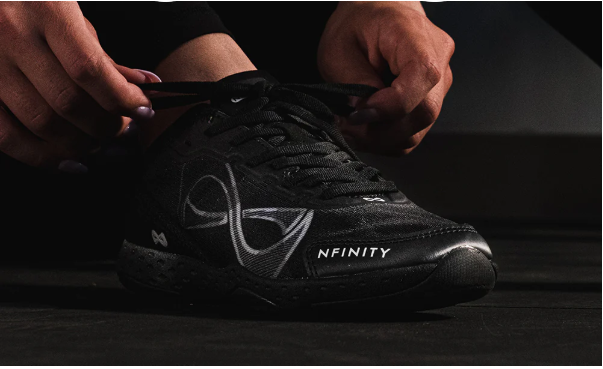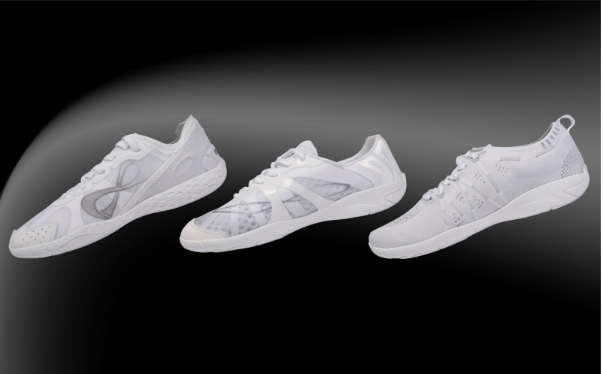When you step onto the mat for competition day, every little advantage counts. The flip of your toe, the snap of your extension, and the speed of your tumbling pass all need focus and confidence. You also need gear that works with you, not against you. As an experienced coach, I have seen many shoe fails in tough routines. I have learned that choosing the right cheer shoes for athletes is crucial. In this post, we will cover everything about lightweight cheer shoes. You will learn how to choose them
What Makes a Great Competition-Day Cheer Shoe?
Before diving into models, let’s get clear on why some shoes perform better under the lights. A competition-day shoe should:
- Feel almost weightless: It shouldn’t drag you down or make your jumps feel heavy.
- Offer secure traction and grip: You want confidence in your motion, spins, and landings.
- Support critical zones: Think midfoot, Achilles, forefoot, without being bulky.
- Be breathable and flex appropriately: Overheating or rigid soles can kill performance.
- Be durable enough for multiple routines (but not abused outside the gym): But remember: performance shoes are meant for the mat, not daily outdoor use.
Because of these priorities, lightness becomes one of the biggest differentiators. A few extra grams can feel like extra effort, especially after your third pass.
You might wonder: why not just go for the most durable, rugged shoe? Because in cheer, performance demands trade-offs.
- A tougher outsole or heavy padding often means more weight. That can slow your rebound, dull your jumps, or make transitions feel sluggish.
- A sleek, mesh-heavy upper might be less forgiving in rough outdoor use – but that’s okay, because competition shoes shouldn’t see the concrete.
- Durability will always be a balancing act; your goal is to choose a model that holds up for its intended use – competition, not daily run-arounds.

Top Cheer Shoe Picks for Competition-Day Performance
Here’s a breakdown of the best cheer shoes that often rise to the top when performance is the priority. I’ll note strengths, use cases, and cautions.
- Nfinity Vengeance: This shoe has long been a go-to for tumblers and flyers seeking a lightweight, sock-like feel. Many users praise how “you don’t feel like you’re wearing anything.”
- Nfinity Alpha: A strong option when you want a balance between lightness and structure. (Alpha is commonly used for gym-only, it’s not built for sideline or street wear.)
- Nfinity Rival 2: Rival models are sideline options (useful for when you’re cheering on the sidelines), but Rival 2 also makes a decent compromise when you need a bit more stability without going fully heavy. Use these only if your gym or competition rules allow them, otherwise stick to the performance models on the mats.
- Nfinity Beast Mid-Top: Beast Mid-Top is a favorite when athletes want ankle support (mid-top cut) without giving up too much agility. For more advanced stunts or dancers who value ankle stability, this is a worthwhile choice.
- Nfinity Flyte: The Flyte is especially designed for tumblers and jumpers who demand bounce and lightness. One reviewer noted it weighs about 3.8 oz, calls the cushioning “springy,” and praises its sleek, breathable design.
Alpha, Beast, Vengeance, and Flyte are gym-only performance shoes. They’re not meant for outdoor use (like walking across pavement, parking lots, or stadium floors). If you need to walk longer distances, it’s safer to use your sideline shoes (Evolution, Fearless, Rival 2) until you reach the competition floor.

Preparing Your Shoes for Competition Day
- Limit non-competition wear – keep them boxed, only wear them during performance.
- Clean the soles – often the grip pattern gets clogged with chalk or dirt; gently scrub the sole before you compete.
- Inspect seams & mesh – do a quick check for weak points (loose threads, small tears).
- Break-in strategy – don’t force heavy sessions on brand-new shoes. Start with light routines, then full work as they properly form to your foot.
- Bring backups (if possible) – even a used pair in reserve can save you if something fails mid-season.
Final Words
If you treat your competition shoes like the high-performance tools they are, choosing wisely, fitting them accurately, and using them only for their intended purpose, they can make a tangible difference in your confidence and execution on the mat.
As you step into your next routine, know this: the right shoes don’t guarantee perfection, but they do give you one fewer thing to worry about. You’ve put in the training. Now let your gear support it, not slow it down.
FAQs
- What type of cheer shoes are best for competition days?
Competition days call for ultra-light, flexible shoes made for indoor mats, like the Nfinity Vengeance, Flyte, or Alpha. These models help reduce fatigue, improve jump height, and provide secure traction during stunts and tumbling. - Should I wear the same shoes for practice and competition?
It’s best to keep one pair specifically for competition use. This keeps the soles clean, the structure firm, and ensures consistent performance under bright lights and pressure. - How can I tell if my cheer shoes fit correctly?
Your shoes should hug the foot snugly without pinching. You should be able to flex, jump, and point your toes easily. A little wiggle room at the toes is good, but no slipping at the heel. - Can I wear my cheer shoes outside before a routine?
Performance models like Alpha, Beast, Vengeance, and Flyte should never be worn outside. Pavement and rough surfaces break down the soles quickly and reduce grip. Always change into them right before stepping onto the mat.
5. How long do competition cheer shoes last?
With proper care and limited outdoor use, most cheerleaders find their performance shoes last one full season. Heavy tumbling or year-round training might shorten that lifespan, so always inspect them between events.


